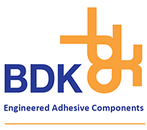Surface Energy and Its Importance For Adhesive Selection
What Does Surface Energy Mean and Why Is It Important For Adhesive Selection?
Surface energy is a term used to describe the excess interaction energy that exists at the surface of a given substrate.
Surface energies range from high to low depending on their chemical make-up which affects the molecular force of attraction. A high surface energy (HSE) means a strong molecular attraction, therefore easier to bond, whereas a low surface energy (LSE) means a weak molecular attraction, therefore harder to bond.
When selecting your adhesive, the bonding surface and its surface energy is a vital consideration. With regards to liquid adhesives, ‘wetting out’ needs to occur for optimum adhesion; this is where the adhesive spreads over the surface to maximise the attractive forces between the adhesive and the surface. For future reference, here are some examples of both HSE and LSE surfaces:
HSE Surfaces:
Copper, Nylon, Polyester, Aluminium, Zinc, ABS, Tin, Stainless Steel, Polycarbonate
Acrylic, Epoxy Paint, Lead, PVC Rigid, Glass Porcelain
LSE Surfaces:
Powder Coated Paints, EVA, Acetal, Polystyrene, PVA, Polyethylene, Polypropylene
Generally, metals and glass have a high surface energy and plastics have a low surface energy. Over the years, the range of adhesives that have become available has increased dramatically, and there are now some that have been specifically created for LSE surfaces; this is because LSE plastics are becoming more predominant throughout industries. This means that there are now more opportunities for manufacturers to use alternative adhesives to the usual, traditional methods of bonding.
At BDK, we stock a number of tapes and adhesives that have been specially formulated for these hard-to-bond surfaces. Take a look at our range of very high bonding tapes, structural adhesives and other specialist products or contact us today for further information and advice.
